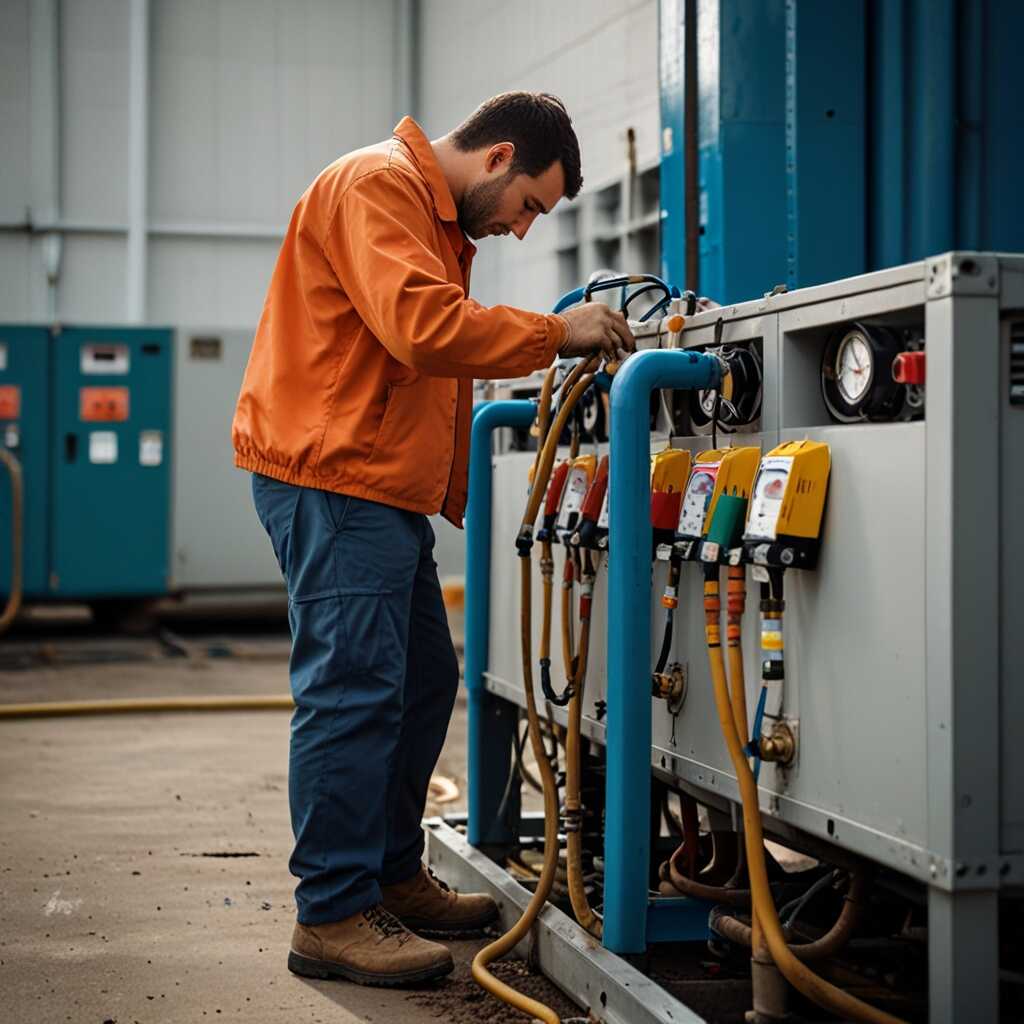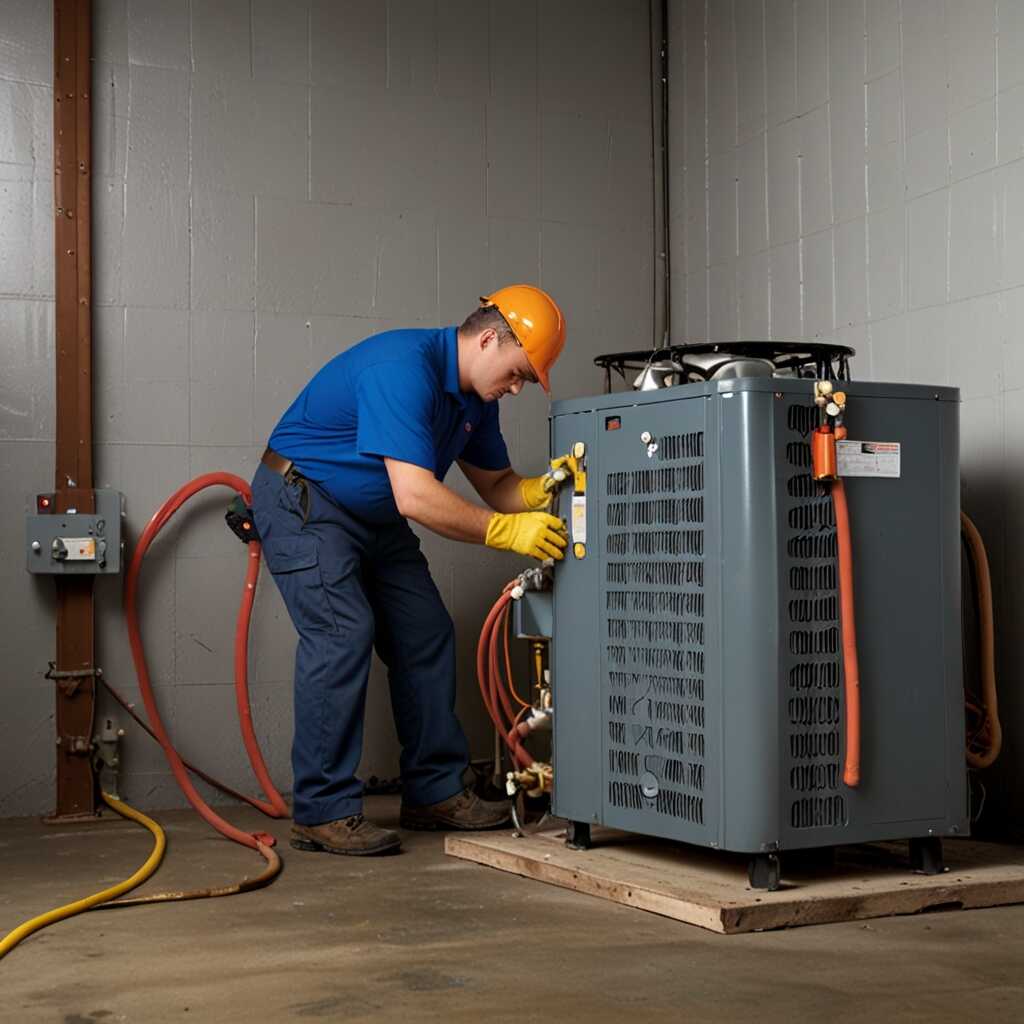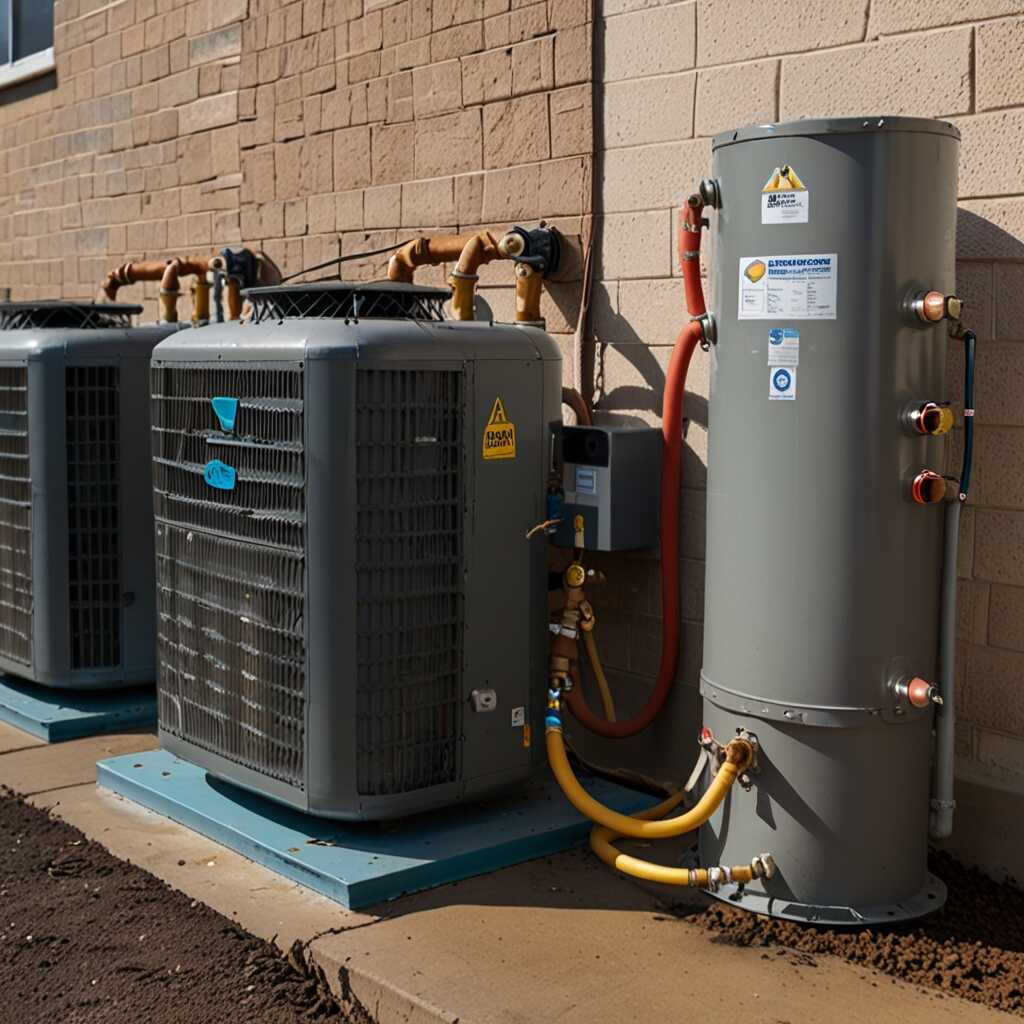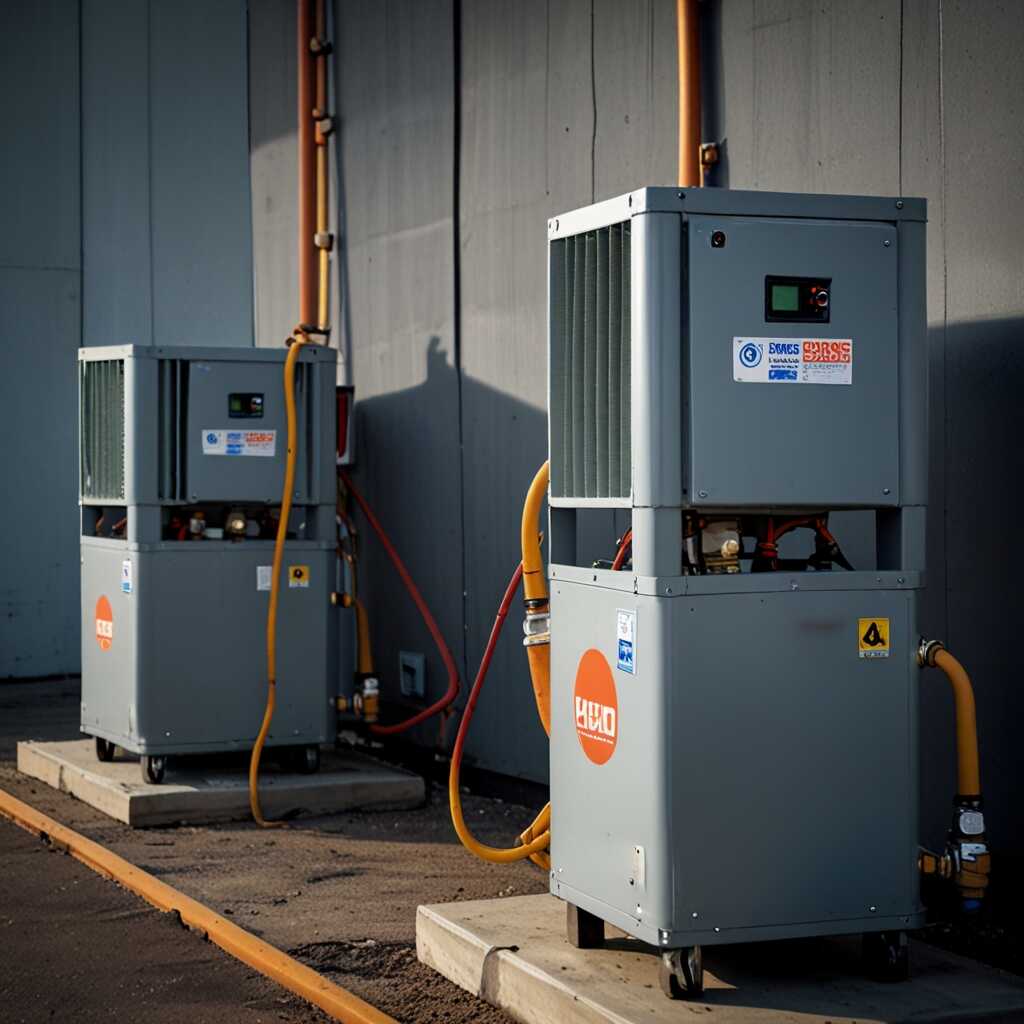Enhancing system cleanup with deep vacuum refrigerant recovery machines can significantly improve HVAC service efficiency. These advanced machines remove unwanted refrigerants and contaminants effectively, reducing system contamination risks. Refrigerant Recovery Pro emphasizes the value of using deep vacuum capabilities for achieving optimal refrigerant management and compliance. Understanding these machines helps HVAC technicians and business owners make informed decisions for better system performance.
Importance of Effective Refrigerant Recovery in HVAC Systems
Effective refrigerant recovery in HVAC systems is essential for protecting the environment. Inefficient recovery practices can lead to harmful refrigerant leaks, contributing to climate change. Legal compliance mandates proper recovery methods to avoid penalties. Economic advantages also arise when refrigerants are reclaimed and reused, improving HVAC efficiency. Recent studies show that only about 60% of refrigerants are recovered during servicing. This statistic highlights the need for advanced solutions, such as deep vacuum refrigerant recovery machines. Such tools enhance the reliability and efficiency of the refrigerant recovery process, offering an essential upgrade for HVAC technicians.
Understanding Environmental Responsibility in Refrigerant Recovery
Environmental responsibility is crucial in the refrigerant recovery process. The use of advanced recovery machines helps prevent refrigerant emissions, which can severely damage the ozone layer and contribute to global warming. These machines are designed to effectively remove refrigerants, ensuring nearly complete recovery during service. Proper recovery protects natural resources and aligns with regulatory guidelines. Technicians must prioritize using technology that delivers efficient recovery results while promoting sustainability. Continuous review and testing of these systems will improve overall HVAC system performance and reduce the environmental impact.
Key Features of Deep Vacuum Refrigerant Recovery Machines
Deep vacuum capabilities in refrigerant recovery machines refer to their ability to achieve very low pressure levels, typically below 500 microns. These machines enhance the refrigerant recovery process by ensuring that all residual refrigerant is removed from the system, preventing contamination. Comparing deep vacuum machines to standard models, the former offers increased efficiency and effectiveness. They provide better reliability, allowing HVAC technicians to maintain system integrity and avoid refrigerant leaks. A deep vacuum machine usually reaches a minimum vacuum level of around 250 microns, which is crucial for optimal recovery.
Understanding the Importance of Vacuum Levels in Refrigerant Recovery
Vacuum levels in refrigerant recovery are essential for determining the effectiveness of the cleanup process. A deep vacuum level below 500 microns is critical for ensuring that moisture and contaminants are completely removed. Machines designed for deep vacuum service offer features such as advanced gauge systems, which provide accurate readings of vacuum levels. These readings help HVAC technicians make informed decisions regarding system maintenance. Achieving a vacuum below 250 microns can greatly enhance system performance, extending the lifespan of HVAC components. Using quality deep vacuum refrigerant recovery machines can help you achieve optimal results.

Advantages of Using Deep Vacuum Machines for System Cleanup
Deep vacuum machines significantly enhance system cleanliness by eliminating moisture, oil, and refrigerants from HVAC systems. They improve recovery efficiency by achieving lower pressure levels, which expedites the refrigerant extraction process. This results in better overall performance of HVAC units. Additionally, using these machines reduces the risk of environmental contamination by ensuring complete recovery and proper disposal of refrigerants, safeguarding against the release of harmful substances into the atmosphere.
Key Features Leading to Enhanced Efficiency
Deep vacuum machines are designed with advanced features that enable optimal recovery of refrigerants. These machines can handle different types of refrigerants, including R-410A and R-22. Their dual-stage vacuum pumps provide a more reliable and faster vacuum than single-stage units. These features help HVAC technicians maintain ideal system performance while ensuring compliance with environmental regulations. The capability to reach vacuum levels of 500 microns or lower is essential in preventing moisture contamination and enhancing the life span of HVAC systems.
Key Figures in Refrigerant Recovery for HVAC Professionals
- Deep vacuum recovery machines can achieve pressure levels below 500 microns.
- Many machines can recover up to 95% of refrigerants during cleaning processes.
- The process can reduce refrigerant loss to less than 0.5% under optimal conditions.
- Some systems can perform a full cleanup in less than 30 minutes.
- A single deep vacuum session can remove more than 80% of moisture from the system.
- In the US, approximately 25 million HVAC units benefit annually from advanced recovery methods.
- Technicians can save about 3 to 4 hours of labor with efficient recovery systems.

Comparative Analysis of Recovery Techniques: Traditional vs. Deep Vacuum
Traditional recovery techniques typically involve basic methods with a refrigerant recovery machine that relies on standard atmospheric pressure. In contrast, deep vacuum technology provides a more thorough and efficient recovery process. This technology can extract refrigerants down to lower pressure levels, enhancing the removal of residual moisture and contaminants. As a result, deep vacuum systems improve overall system performance and durability. Compliance with industry regulations is more easily achieved through deep vacuum methods, which minimizes the chances of refrigerant leaks and optimizes system integrity. Reports indicate recovery times can vary dramatically, with traditional methods taking, on average, 30% longer than deep vacuum methods, making the latter more attractive to HVAC professionals.
Enhancing Efficiency and Reliability with Deep Vacuum Technology
Deep vacuum technology significantly enhances efficiency and reliability in refrigerant recovery processes. This method allows technicians to achieve vacuum levels under 500 microns, drastically improving moisture removal in air conditioning systems. Traditional systems do not consistently reach these low levels, leading to inefficient moisture extraction, which can damage compressors and other components. Deep vacuum machines are designed to handle a wider range of refrigerants, making them a versatile choice for HVAC applications. Users benefit from faster recovery times while ensuring compliance with environmental standards. To help HVAC professionals choose the right equipment, Refrigerant Recovery Pro offers detailed reviews and comparisons of the latest refrigerant recovery machines available.

Applications of Deep Vacuum Refrigerant Recovery
Deep vacuum refrigerant recovery machines are vital in various HVAC applications. They enhance efficiency in air conditioning systems, heat pumps, and refrigeration units. For instance, in commercial HVAC systems, these machines help achieve lower refrigerant levels, reducing the risk of contamination. They are designed to work with both large and small systems, offering reliability and efficiency in each job. Their ability to achieve vacuum pressures as low as 500 microns makes them essential for proper system cleanup. This ensures thorough moisture and contaminant removal, meeting rigorous environmental compliance standards.
Benefits in Residential HVAC Systems
In residential HVAC systems, deep vacuum recovery machines improve system performance and longevity. They effectively remove remaining refrigerant, moisture, and non-condensable gases. This process enhances system reliability and efficiency. By achieving extremely low vacuum levels, these machines help prevent costly repairs and system failures. Technicians using these machines report increased satisfaction levels from homeowners due to improved HVAC performance and lower utility bills. Refrigerant Recovery Pro offers expert guidance on using these machines effectively in residential settings, ensuring optimal results.
Advantages of Utilizing Advanced Recovery Equipment
- Machines ensure thorough removal of contaminants and refrigerant for improved performance.
- Deep vacuum systems help HVAC professionals comply with environmental regulations.
- Using this equipment provides a cleaner operating environment for the HVAC system.
- Technicians improve service efficiency, leading to higher customer satisfaction rates.
- These machines extend the lifespan of HVAC components by ensuring proper cleanup.
- Investing in advanced technologies can lower operational costs in the long run.
- Deep vacuum capabilities reduce the risk of system failures and costly repairs.

Best Practices for Operating Deep Vacuum Recovery Equipment
Proper operation of deep vacuum recovery machines ensures reliability and efficiency. Adhere to essential safety protocols. Always wear appropriate personal protective equipment (PPE) to prevent exposure to harmful refrigerants. Regularly review the manufacturer’s manual and specifications for your specific model to understand its features and functions. Use leak detection equipment to identify any potential issues before starting the recovery process. For optimal performance, ensure the machine is calibrated correctly. The recommended vacuum level for effective refrigerant recovery is typically 500 microns. Below this threshold, the system reaches an excellent evacuation level.
Maximizing Equipment Performance During Recovery
Maintaining high equipment performance during recovery is critical for efficient operation. Verify the hoses and connections for any blockages or leaks. Use high-quality, durable hoses to avoid pressure loss. Monitor the vacuum level throughout the process. If the gauge shows a drop in microns, check for potential leaks and recalibrate your equipment if necessary. Regular maintenance is crucial; clean and replace filters as needed to ensure smooth functioning. Following best practices with this equipment enhances reliability and improves overall efficiency during refrigerant recovery operations.
Emerging Trends in Refrigerant Recovery Technologies
Current trends in refrigerant recovery technology highlight advancements that enhance efficiency and reliability. Deep vacuum systems are evolving with innovative features, including better filtration and faster recovery rates. Leading companies in this field include manufacturers like Yellow Jacket, CPS Products, and Robinair. These brands focus on improving performance with user-friendly designs. Experts predict that by 2025, deep vacuum systems will achieve efficiency improvements of up to 30%, delivering better service for HVAC technicians.
Key Innovations in Deep Vacuum Systems
Innovations in deep vacuum systems focus on features that improve recovery speed and dependability. For instance, newer models now include automated controls that enhance reliability during operation. These systems can handle various refrigerants effectively, ensuring efficient cleanup. Research shows that integrated digital technology allows real-time performance monitoring, providing HVAC technicians with data to optimize recovery processes. Additionally, robust design improvements ensure durability, making daily operation comfortable and efficient for users in the field.
Brands or User Demographics Favoring Recovery Solutions
- Major brands like Yellow Jacket and Robinair are known for reliable recovery machines.
- HVAC technicians in urban areas often prefer advanced tools for higher efficiency.
- New HVAC businesses invest in recovery machines to build reputation quickly.
- Companies focused on sustainability use such machines to reduce environmental impact.
- Experienced professionals benefit from training institutions offering specialized courses.
- Government agencies encourage contractors to adopt modern recovery solutions.
- The residential market increasingly demands enhanced HVAC services and technology.
Compliance and Regulations Surrounding Refrigerant Management
HVAC professionals must adhere to various key regulations governing refrigerant management, including the Clean Air Act and the Montreal Protocol. Deep vacuum technology plays a vital role in ensuring compliance by efficiently removing refrigerants from systems, thereby minimizing atmospheric release. Using deep vacuum machines enhances sustainable refrigerant practices by achieving low pressure levels that reduce refrigerant escape, ensuring adherence to regulations. The current EPA regulation permits a maximum of 10% loss of refrigerant during recovery, making efficient recovery systems critical for compliance.
Understanding EPA Regulations on Refrigerant Recovery
EPA regulations on refrigerant recovery require HVAC technicians to follow specific procedures during recovery to ensure environmental safety. Proper use of deep vacuum technology allows technicians to recover up to 99% of refrigerants, significantly minimizing the potential for leaks. Compliance is essential for HVAC businesses to avoid hefty fines and legal repercussions. Deep vacuum systems are specifically designed to achieve the lowest possible pressure, allowing for efficient recovery and disposal. This focus on reliability and efficiency is crucial as regulations tighten, especially with a target focus set for full compliance by 2025.